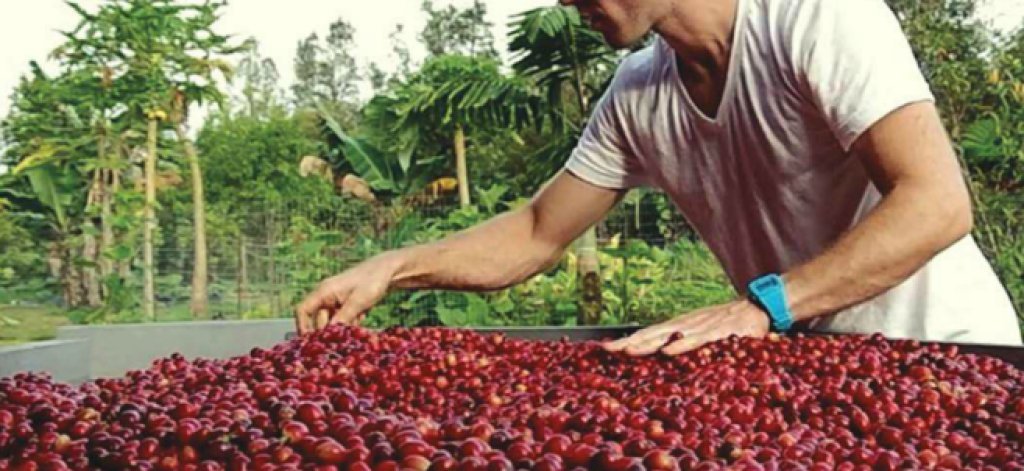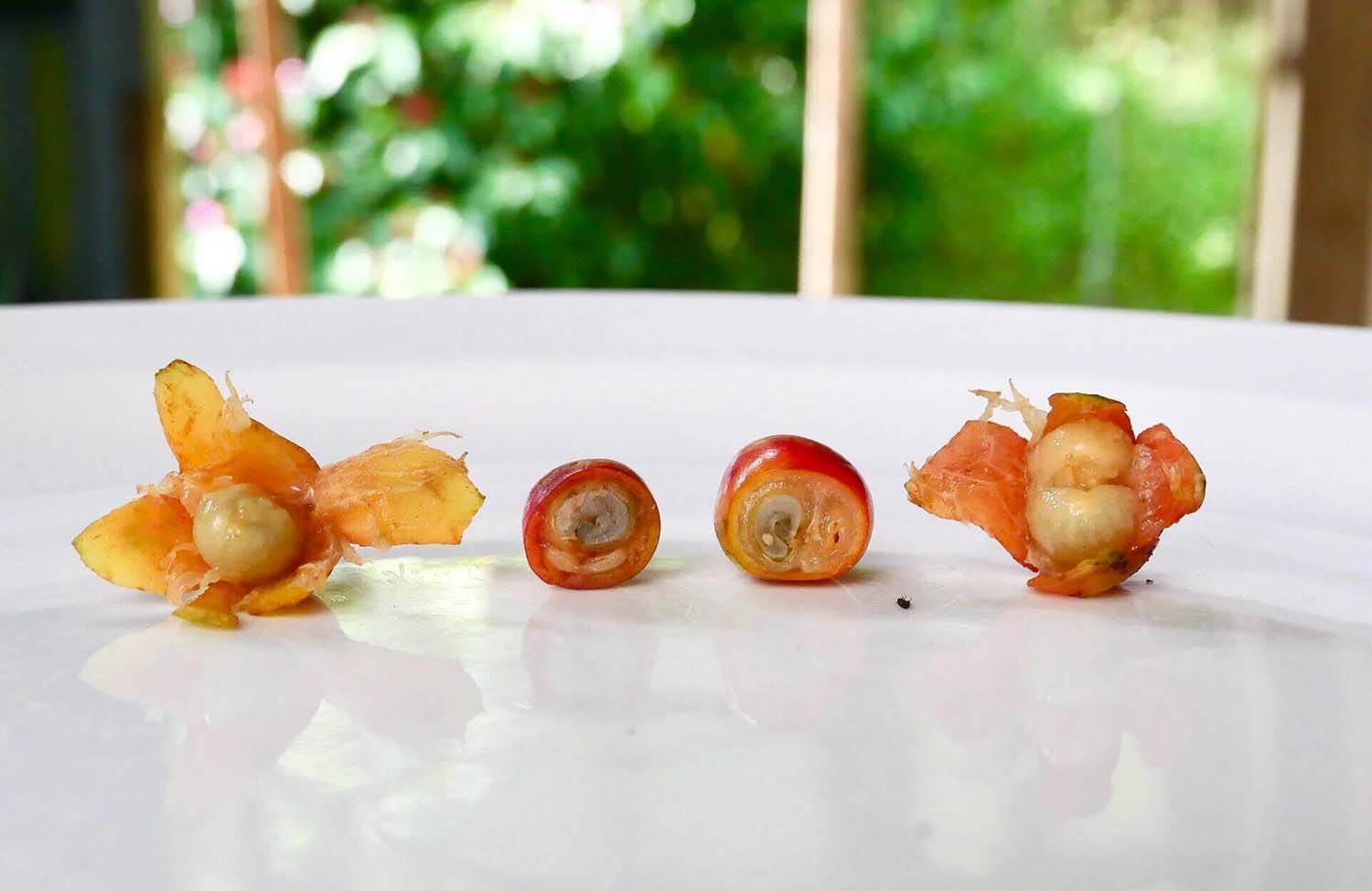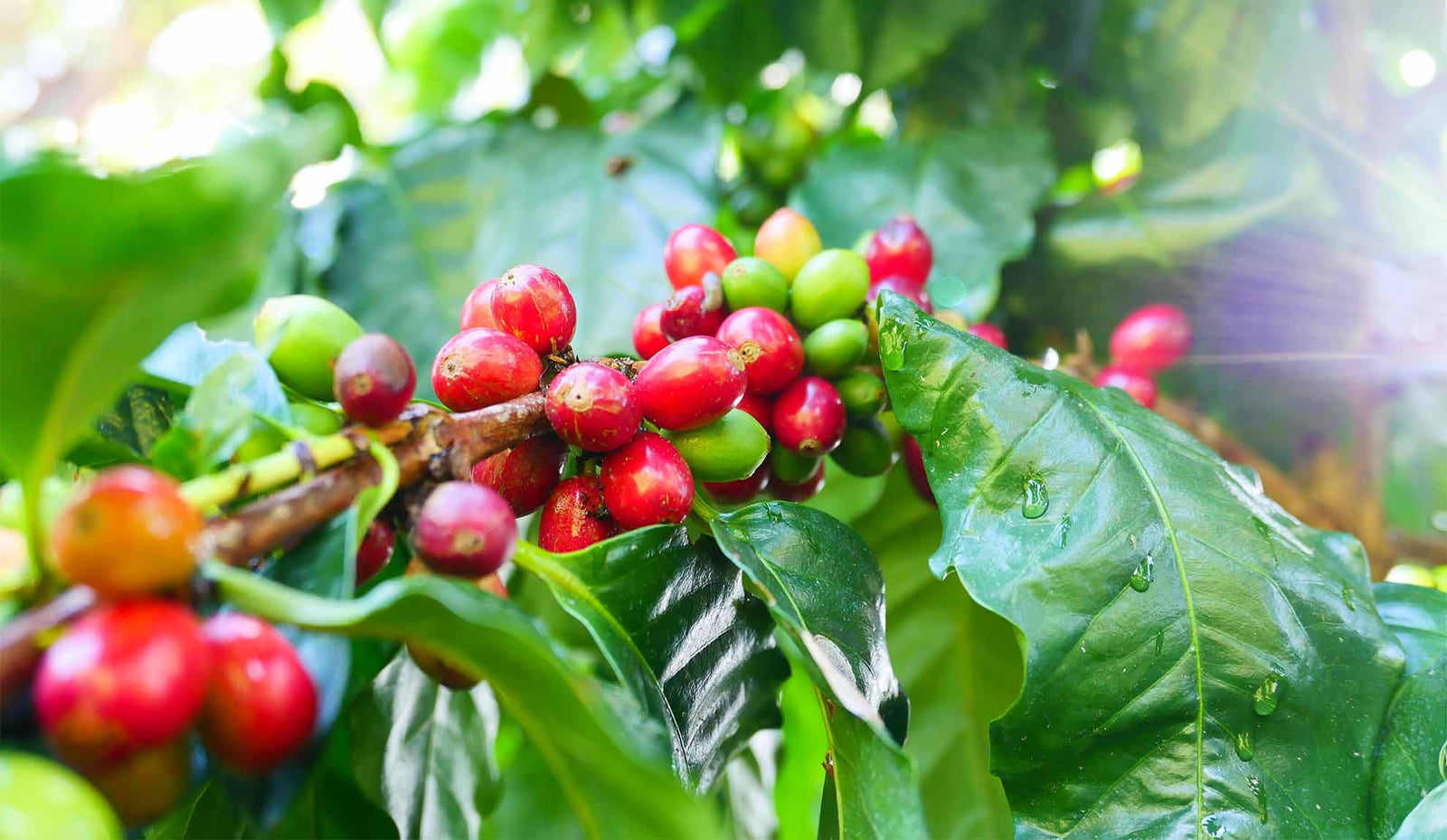Originally published in Barista Magazine as: "2015 Big Island Field Report" on Puna Coffee. Sept. 2015 (Pages 38-43). Written by Brandon von Damitz.
Growing Hawaiian Coffee in Hawaii's Wild, Wild West...
2015 Big Island Field Report
By Brandon von Damitz
The east side of the Big Island is a place distinguished by lava,ʻōhiʻa lehuaforests, abundant ferns, endemic honeycreeper birds, wild pigs, heavy rainfall, and the most active volcano in the world. It’s lush, uncivilized, diverse, and uncontained. It’s the birthplace of the new earth, an undulating environment of intense sensations. But it’s also home to troublesome invasive species, poverty, mold, insanity, meth, and many people eager to leave civilization. It’s beautiful and crazy. This is the Hawai’i tourist brochures won’t show you. Though the easternmost district in the state, this is Hawai’i’s wild west. This is Puna.
Inside the 320,000 acres designated as Puna, there’s a whole universe, so much so that the term “Punaverse” has been coined by residents. Even with a scant population of about 50,000, it’s the second most ethnically diverse county in the nation after the Bronx New York. But the jungle here is real. The landscape and flora consume its inhabitants. No doubt, this place is distinctive and authentic. Whether you love it or hate it, think of it as good or bad, there’s justsomething about Puna. And this observation is reflected in the coffee that grows here. Nevermind that our Puna pink bourbon topped the score sheet of the 2013 statewide cupping competition or that our honeyed yellow caturra garnered a spot on Coffee Review’s “Top 30 Coffees of 2013” list. They’re no guarantee you’ll swoon for the experience in the cup. And that’s precisely what has pulled me into the mysteries of coffee, Puna coffee in particular. It tells its own story in its own way, just like the place it calls home.
OUR STORY
Kelleigh, my life and business partner, and I moved from Portland, Oregon to Mountain View, Hawaii in September of 2010. Each of us had many different reasons for doing so but, in retrospect, there was only one that really mattered: adventure. At the time, we were looking to buy a house in Portland or possibly land to start a farm in the Willamette Valley. When a craigslist real estate hunt led us to a listing for a small three-acre, a vertically integrated coffee farm in Hawai’i, we thought, “Why not?!” We’d never heard of Puna or Puna coffee, but it seemed like a natural fit for our interests and skillsets. Kelleigh has a science background with a mindset to match and a deep love for mushroom hunting and forest exploration; I like plants, but I really like throwing myself into situations I know nothing about and then figuring it out. We’re both nerds at heart. And we’re both obsessive-compulsive enough to want to learn how to do everything (or, at least, as much as we can as well as we can). Living the city life simply didn’t allow us to explore our curiosities.
We arrived at the beginning of the coffee harvest season and had no idea what the hell we were doing. Neither of us had any experience growing, processing, roasting, or cupping coffee. We only understood the bare minimum about wet processing thanks to instructions by the previous owner. All we knew was to pick ripe red coffee cherry.
To get a feel for our new home and endeavor, we made coffee very intently every morning via press pot to taste this new place. It didn’t take long before we regretfully concluded with each other that our coffee really wasn’t good...at all. Logically, we panicked. Me being the farmer, I assumed it was caused by an inferior variety of coffee in the field (or worse,robusta) and immediately began researching anything that might help resolve the problem: coffee pictures for identification, grafting techniques, cost analyses of replanting, and nurseries around Hawai’i with “good” coffee plants. This is what happens when you walk half-blind into endeavors. We didn’t even have the knowledge to say whether or not we grewarabica coffee. Ouch. It’s a little embarrassing, but completely fair, to admit: we bought a coffee farm out of ignorance. We started at ground zero and had a long way to go before “good” coffee.
Adding more depth to the naivety-terror dynamic, the coffee field mirrored the surrounding jungle. It was a two-acre mess of over-grown and out-of-control 1700 malnourished trees, some reaching 30 feet tall or more. Little-to-no pruning had been done in the 15 years since its establishment. Coffee cherries of all shapes, sizes, and colors scattered across a backdrop of green foliage and tangled limbs in dizzying kaleidoscopic fashion. Are those red, pink, and yellow cherries on the same tree? Is that yellow caturra or catuai? Is that red caturra, catuai, typica or…? It was simultaneously thrilling, overwhelming, and awe-inspiring. We realized then that our adventure was just beginning. Unraveling a mystery only to discover many more became a daily ritual. We followed curiosity and it beckoned us deeper and deeper into the wilderness of possibility.
SEVEN STEPS TO PERFECTION
Since then, we’ve learned a little bit. When you’re on a fairly isolated farm with more time and questions than money and city activities, you tend to tinker with your surrounding environment and figure out answers, techniques. We experiment, test extremes, learn limitations, respect parameters, make mistakes, and repeat. Being vertically integrated from coffee seed to roasted, packaged bean, we have the great blessing of perspective coupled with the burden of responsibility. Dazzling arrays of potential await realization, but exploration is balanced and tempered by time, money, and energy. Though it doesn’t require any fancy tricks or gimmicks to transform poor coffee into great coffee. The landscape and weather do most of the work. The rest is up to human intervention to observe, to assume the role of liaison between plant and animal worlds, and skillfully manipulate certain variables -- to craft.
So we dove in headfirst and, sooner rather than later, our coffee started tasting prettydamn good. It only took about two years. Step by step, we began understanding the variables and processes involved in cultivation, harvesting, processing, drying, storing, roasting, and brewing. This is not to say we don’t continue to make mistakes. Even if you know exactly what needs to be done, fatigue, life, nature, quantum mechanics -- whatever -- ultimately shape and disrupt the circumstances of execution. But that’s the beauty, that’s the struggle, that’s thething about coffee: you can fuck it all up at any single step from seed to cup. Everything can be executed with perfection all the way through roasting and then completely botched with improper brewing. So delicate and intricate is coffee that it leaves you chasing after its elusive harmony. The “perfect” cup is the experience of an extremely rare consonance of innumerable factors coming together over great distances of space and time.
LITTLE PESTS & BIG THREATS
As mentioned, the coffee field was in disarray when we adopted it in 2010. Slowly, year by year, we rehabilitated and rejuvenated the trees with hours of pruning, clearing, feeding, and nurturing. Our yield was scant the first two years: about 350 roasted pounds in 2010 and 2011. In 2012 and 2013, it came in at about 1000 pounds. Definitely an improvement but not that good given the tree count. By March 2014, the coffee was looking better than ever. We had huge, uniform, consecutive flowering sessions all through February, and the trend continued until late March. The blossoms promised an earlier, heavier crop. And more flowers randomly popped in April and May.
To prepare for this big season, I didn’t waste any time taking the necessary steps to mitigate risks. We have a few difficult challenges to overcome for a successful harvest. The most persistent among them are fungi: Cercospora and anthracnose, to be precise. Given Puna’s high humidity and rainfall, these fungi can only be managed as they’ll likely stick around for a very long time. The coffee was hit pretty hard in 2013 as the fungi caught me off guard during a dry spell in August and September. But this season I began a steady organic copper fungicide regimen as soon as the young, tender green coffee cherry plumped up in June.
In July 2014, wild pigs -- the darling mascot of our company Big Island Coffee Roasters -- became a real problem for the first time. Several broke through the perimeter fence and turned over masses of lava rock earth in search of worms, mostly around the shaded, soft roots of the coffee trees. Pigs have always had a presence on our farm, generally going for fallen fruit and our vegetable garden, which we have well-fenced now. I didn’t hesitate to take care of them this year as the destructive consequences were too great. By January of 2015, I’d stopped four dead in their tracks, three of which were stored in the freezer and appropriated for delicious slow-cooker meals that fed me throughout the season. Some features of farm life just make me plain giddy. Eliminate a nuisanceand get free food in the process? #Winning.
But some aspects of farming aren’t so awesome. Though important, humbling lessons of humanity’s minuscule finitude, natural disasters can bring imminent destruction. All you can do is brace, hope, and take it as it comes. Such was the case when Puʻu ʻŌʻō crater, a mere 11 miles away and uphill from our farm, began gushing lava on June 27th, 2014. Then, on August 7th, Hurricane Iselle hit the Big Island, which luckily had reduced to a moderate tropical storm when it made landfall. And, again, on October 15th, threats of hurricane Ana came and went as the storm barely missed Hawai’i to the south. It’s easy to put the anxiety, tension, and anticipation into words. But it’s impossible to make anyone outside of this position empathize. Truth be told, I feel more grateful to have gone through the experience than anything else. We, and the coffee, made it with only a few minor losses, which is far, far better than most in Puna and elsewhere on the Big Island.
FOUR YEARS TO FRUITION
The harvest season began the first week of September and continued smoothly, unfolding with teleological succession until the end. The trees were so heavy with coffee the field looked pregnant. The fungi were under control. Infrastructure was expanded and improved, ready for daily abuse. The weather was sunny and warm, perfect for harvesting and processing. And skilled pickers arrived precisely when we needed them most. Coffee produces fruit once a year but, although we garnered acclaim for our quality in 2013, it took us four intense, fun, and exhausting years to produce high-qualityand quantity. Only a farmer can truly understand this miracle.
Typically, I’ve handled the majority of harvesting by myself. This has been the case primarily for two reasons: 1) I’m extremely meticulous about what’s picked and 2) there’s very little coffee in our location so this type of skilled labor is scarce. As you might imagine, these two factors reduce our odds of getting help in the field. But 2014 was different -- it was a blessing, actually. The months and years leading up to this harvest would mean nothing if the coffee just rotted and fell off the trees. To my absolute surprise and delight, many awesome people were in the neighborhood and picked remarkably well for the duration of the season. I’m incredibly grateful for the hard-working folks that showed up consistently and put immense focus and energy harvesting the best cherry from the shrubs. I cannot emphasize this enough.
Ripe coffee came early, heavy, and fast. By late October, we’d exceeded our previous yield record from the 2012 / 2013 season, which stretched from late August to March. Through September and October, the weather was dry and provided the perfect environment for natural and honey processing (two techniques that rarely succeed due to Puna’s humidity and rain). By Thanksgiving, we had several tons of coffee in storage to be thankful for. In the second week of February 2015, we reached the season’s finale, weighing in at just under 14,000 pounds.
This season was a beautiful, rewarding culmination of the last four years’ earnest efforts to learneverything about coffee from seed to cup. And we were intimately close to three natural disasters that could have robbed us of our heaviest and best crop yet. Pretty thrilling but scary stuff, which is why we so lovingly ushered in each pound of the ripe coffee cherry. Though we’ve come a long way in four years, there are hundreds of lifetimes of learning potential. But a harvest experience like this will inspire for years to come, especially in the cup.




